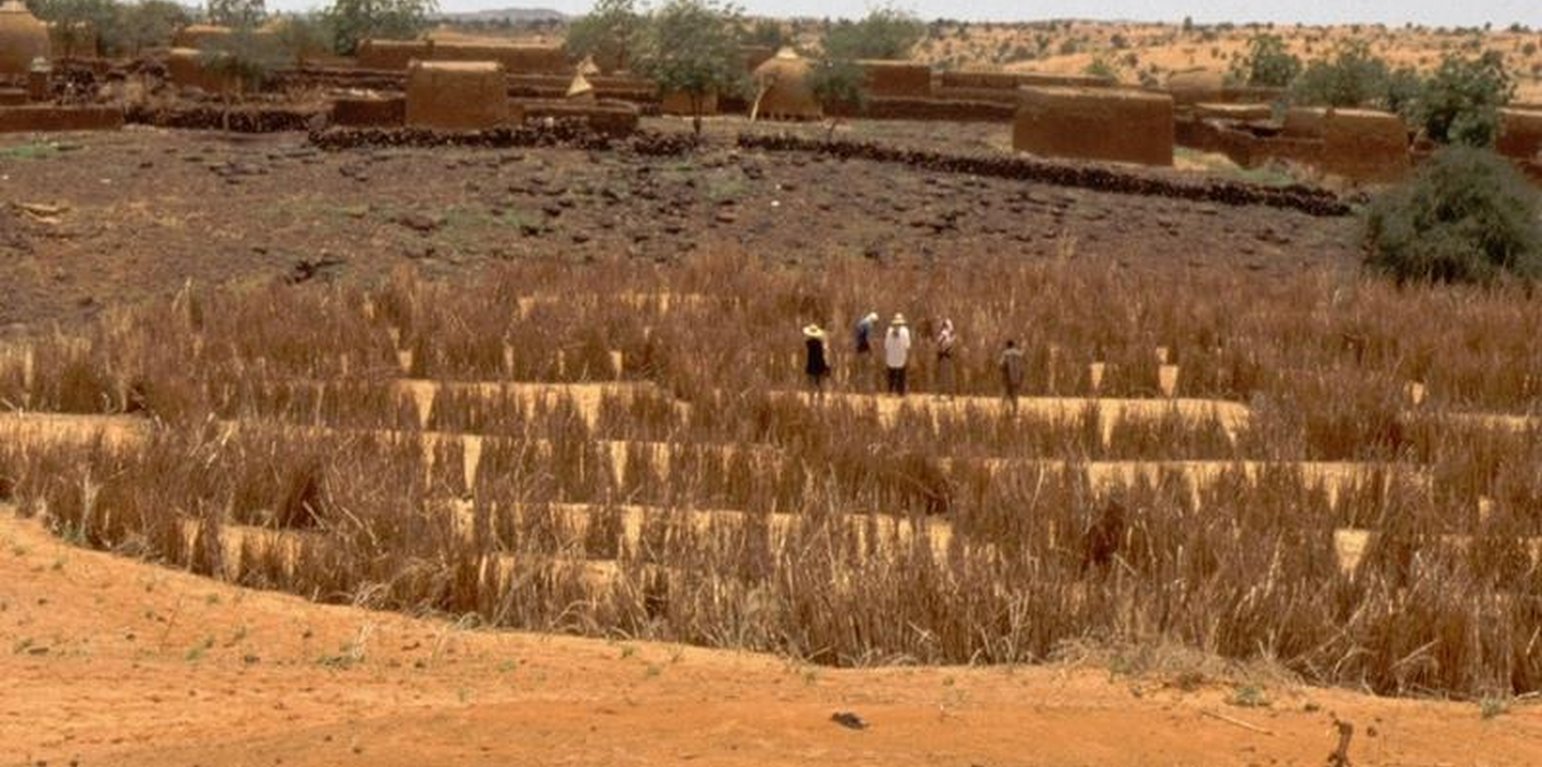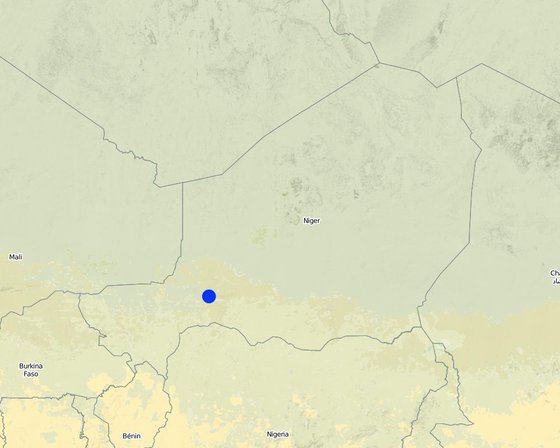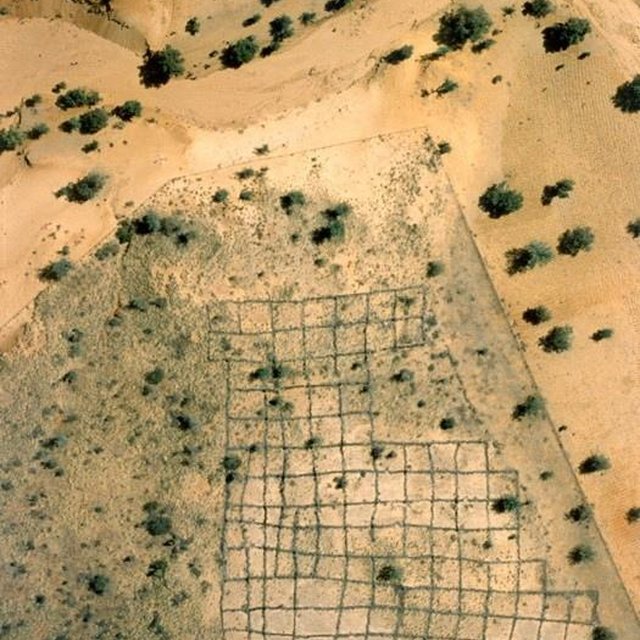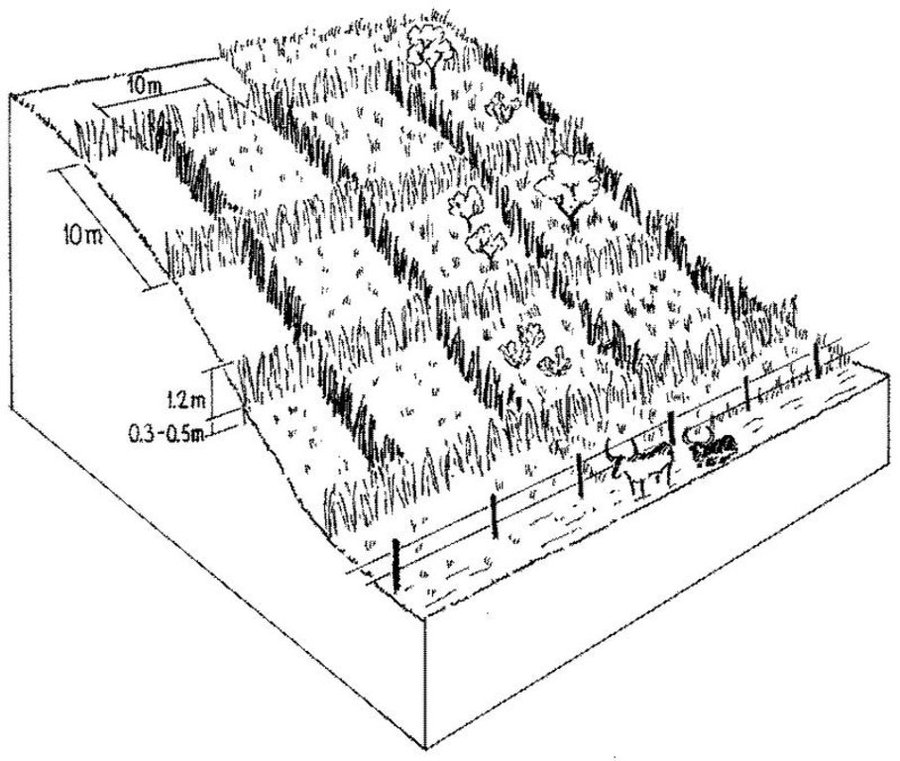



In the Sahelian zone of Niger, sand dune encroachment can lead to loss of agricultural and pastoral land, and threatens villages. These dunes may form as a result of an increase in wind erosion, but more frequently originate from formerly stabilised dunes that have become mobile again following the disappearance of vegetation. Vegetation loss may occur through a combination of unfavourable climatic conditions and overexploitation by grazing and fuelwood gathering.
Purpose of the Technology: Sustainable dune fixation requires the regeneration of vegetation on the mobile parts of the dunes. For plants to establish, the dunes need to be protected by mechanical measures while being defended against any kind of use. Hence, the technique of dune stabilisation consists of a combination of three measures. These are as follows: (1) Area closure by wire fencing and guarding to prevent exploitation of the area during the rehabilitation phase until vegetation is sufficiently established (2-3 years). (2) Construction of millet stalk palisades arranged ideally in ‘checker-board’ squares, which act as windbreaks. These physical structures are a barrier to sand transport by wind, and thus are a prerequisite for revegetation. After two years the palisades fall apart and decompose - and the vegetation takes over the dune fixation function. Small erosion gullies can be controlled by check dams made from stone or millet stalks. (3) Natural regeneration, planting and seeding of annual and perennial plants (including Acacia spp. and Prosopis spp.) for soil stabilisation.
Establishment / maintenance activities and inputs: As soon as vegetation cover is established on the denuded surfaces the dunes can be used for grazing or for harvesting of herbs and fuelwood. Period and frequency of use should be determined in common agreement with all actors involved. In addition the pasture on the dune can be used as a ’reserve’ for late dry-season grazing, depending on vegetation development and herd size. Between 1991 and 1995, just over 250 ha of sand dunes were stabilised in the case study area. Incentives were provided by the ‘Projet de Développement Rural de Tahoua’ (PDRT, see also ‘Participatory land rehabilitation’ approach). After 1995 no further dunes were stabilised due to the high cost of the wire fencing, which local communities simply could not afford themselves. However, as the objective of the fence is to keep out humans and animals during critical periods (the rainy season), the same effect could be obtained at no financial cost through ‘social fencing’, that is agreement between stakeholders on where there should be no grazing. Furthermore the technology itself - which works well - could be relevant to situations where higher investment can be justified for specific reasons.

الموقع: District of Tahoua, النيجر
عدد مواقع تنفيذ التقنيةالتي تم تحليلها:
انتشار التقنية: منتشرة بالتساوي على مساحة (2.0 km²)
في منطقة محمية بشكل دائم؟:
تاريخ التنفيذ:
نوع التقديم








| تحديد المدخلات | الوحدة | الكمية | التكاليف لكل وحدة (دولار أمريكي USD) | إجمالي التكاليف لكل مدخل (دولار أمريكي USD) | % من التكاليف التي يتحملها مستخدمو الأراضي |
| العمالة | |||||
| Enclose area and protect | ha | 1,0 | 300,0 | 300,0 | 100,0 |
| معدات | |||||
| Tools | ha | 1,0 | 10,0 | 10,0 | |
| المواد النباتية | |||||
| Tree seedlings | ha | 1,0 | 20,0 | 20,0 | |
| مواد البناء | |||||
| Wire fence | ha | 1,0 | 1120,0 | 1120,0 | |
| إجمالي تكاليف إنشاء التقنية | 1'450.0 | ||||
| إجمالي تكاليف إنشاء التقنية بالدولار الأمريكي | 1'450.0 | ||||
| تحديد المدخلات | الوحدة | الكمية | التكاليف لكل وحدة (دولار أمريكي USD) | إجمالي التكاليف لكل مدخل (دولار أمريكي USD) | % من التكاليف التي يتحملها مستخدمو الأراضي |
| العمالة | |||||
| Maintain area and guarding | ha | 1,0 | 45,0 | 45,0 | 100,0 |
| المواد النباتية | |||||
| Tree seedlings | ha | 1,0 | 5,0 | 5,0 | |
| إجمالي تكاليف صيانة التقنية | 50.0 | ||||
| إجمالي تكاليف صيانة التقنية بالدولار الأمريكي | 50.0 | ||||
temporary loss of land, reduced access to pastures
Millet stalks are taken from the fields where they have a function as mulch and fodder
Socio-cultural conflicts between agriculturalists and pastoralists
Requires concerted action from all land users during, but even more after, rehabilitation